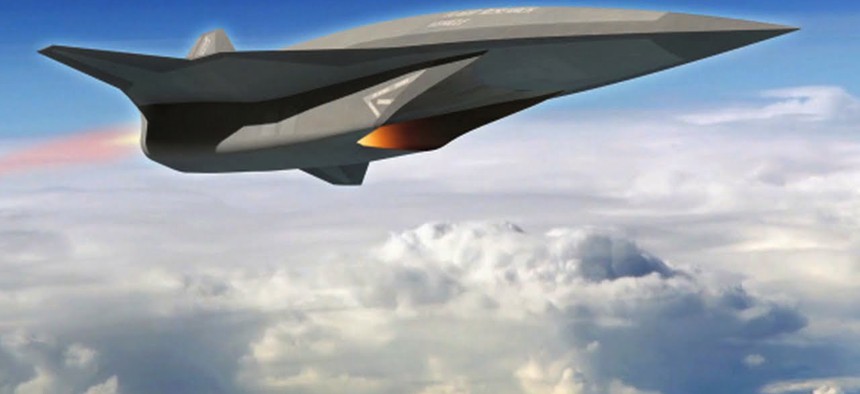DARPA hypersonic effort accelerates
The research agency awards contracts to demonstrate a hybrid hypersonic engine.
DARPA has awarded a pair of R&D contracts to develop and demonstrate a new propulsion technology capable of operating up to hypersonic speeds.
The contract awards are part of the agency's Advanced Full Range Engine (AFRE) program launched several years ago to develop reusable aircraft capable of hypersonic speeds of about Mach 5 (about 3,300 miles per hour). The program seeks to develop a propulsion system capable of exceeding the top speed of traditional jet-turbine engines that top out at about Mach 2.5 while developing a reusable capability required for sustained flight at Mach 5.
Achieving hypersonic flight is currently achieved using expendable rockets. The current capability gap "means that any air-breathing hypersonic vehicles developed today would use disposable rockets for one-time boosts up to operating speed, limiting the vehicles’ usefulness," program officials noted.
AFRE seeks to move beyond scramjet propulsion to demonstrate a reusable propulsion system using new kinds of hydrocarbon-based propellants to achieve subsonic, supersonic and hypersonic speeds. The result would be a propulsion system that operates from takeoff all the way though hypersonic cruising speed.
"Instead of designing an entirely new kind of engine, we’re envisioning an inventive hybrid system that would combine and improve upon the best of off-the-shelf turbine and ramjet/scramjet technologies," noted Christopher Clay, DARPA's program manager for AFRE
Over the last month, DARPA has awarded contracts to Aerojet Rocketdyne Inc. and Orbital ATK to develop and conduct ground tests of a prototype engine. The Orbital ATK contract was valued at $21.4 million. The amount of the Rocketdyne deal was not disclosed.
The contractors will seek to demonstrate a new engine concept called "turbine-based combine cycle" (TBCC) which uses a turbine engine for lower speeds along with a dual-mode ramjet/scramjet to achieve supersonic speeds.
AFRE aims to advance a TBCC engine concept, which would use a turbine engine for low-speed operations and a dual-mode ramjet—which would work efficiently whether the air flowing through it is subsonic (as in a ramjet) or supersonic (as in a scramjet)—for high-speed operations.
The two components of the hybrid engine would share a common forward-facing air intake and rear-facing exhaust nozzle to release thrust, DARPA said.




